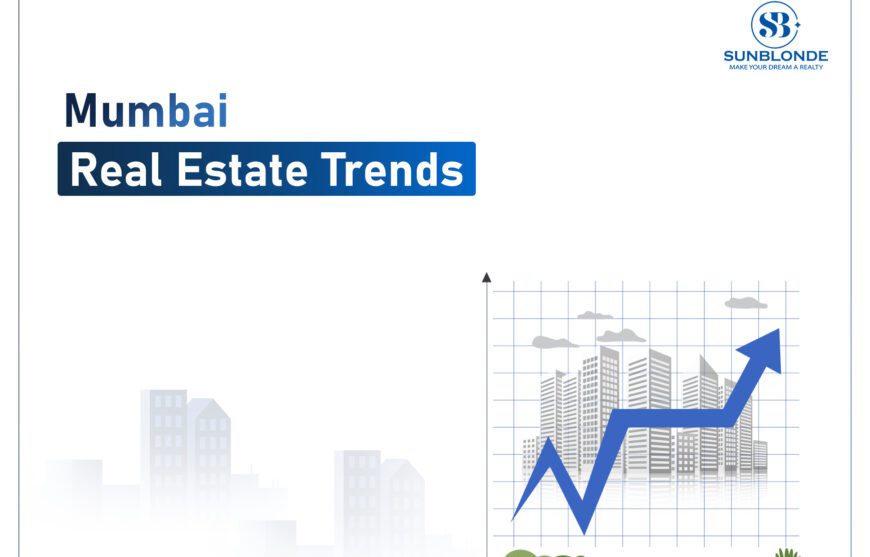Mumbai Real Estate Trends
Current Market Overview
The current landscape of Mumbai’s real estate market exhibits a dynamic and rapidly evolving environment, characterized by fluctuating property prices and shifting demand patterns. As of the latest statistics, the average property price in Mumbai ranges from INR 20,000 to INR 65,000 per square foot, depending on the locality and type of property. This broad price range underscores the varying demand dynamics across different sectors of the city.
Sales volume in the city has seen a notable increase over the past year. According to recent data, there has been a 15% rise in property transactions, indicating a resurgence in market activity. Residential properties, particularly in the mid and high-end segments, have shown robust performance. The demand for ready-to-move-in homes has surged, while commercial real estate is witnessing a gradual but steady recovery.
The economic landscape has had a palpable impact on Mumbai’s real estate trends. Governmental policies such as stamp duty reductions and cuts in home loan interest rates have incentivized property purchases. The introduction of regulatory reforms like RERA (Real Estate Regulatory Authority) ensures greater transparency and boosts investor confidence. Additionally, infrastructure projects such as the Mumbai Trans Harbour Link and the metro expansion are anticipated to enhance connectivity and elevate property values in adjacent areas.
The COVID-19 pandemic has significantly altered buying behavior and market dynamics. Potential buyers are now more inclined towards properties that offer expansive living spaces, home offices, and proximity to healthcare facilities. The demand for properties in suburban and peripheral areas has surged as remote working arrangements become the norm. Additionally, there is an increased interest in properties that offer better environmental features and wellness amenities.
In conclusion, Mumbai’s real estate market reflects a blend of recovery and adaptation. The evolving preferences of buyers, coupled with supportive governmental measures, paint a promising picture for the future of the market.
Emerging Neighborhoods and Hotspots
In the dynamic landscape of Mumbai’s real estate market, several neighborhoods are witnessing a surge in popularity among buyers and investors. These emerging hotspots are attracting attention due to notable improvements in infrastructure, better connectivity, and an enhanced availability of amenities. Among the standout areas are Thane, Navi Mumbai, and several up-and-coming regions within the central and peripheral limits of Mumbai.
Thane has transformed remarkably over the past decade, becoming a sought-after destination for both residential and commercial investments. The district’s strategic location—nestled between lush green spaces and urbanized zones—plays a significant role. Additionally, Thane’s improved road and rail connectivity to Mumbai’s main business districts, such as Bandra-Kurla Complex (BKC), has substantially boosted its appeal. According to recent data, property investments in Thane have grown by over 20% year-on-year, with several new projects such as Rustomjee, Lodha, and Hiranandani enhancing the locality’s profile.
Navi Mumbai is another area experiencing a real estate boom. Known for its planned urbanization, the city’s connectivity enhancements, including the upcoming Navi Mumbai International Airport and the Trans-Harbour Link, are major attractions. The availability of more affordable housing compared to mainland Mumbai, coupled with a surge in corporate establishments, makes Navi Mumbai an attractive proposition. Recent projects like Kharghar, Vashi, and Panvel are receiving attention, with future projections indicating a steady rise in property demand and value in these sectors.
Within Mumbai’s city limits, regions such as Wadala, Chembur, and Goregaon are emerging as significant hotspots. Development projects like the Monorail and the Metro lines have dramatically improved accessibility, making these areas attractive for both developers and buyers. The availability of excellent social amenities like schools, hospitals, and shopping centers further enhance their desirability. Real estate experts forecast sustained growth in these neighborhoods, driven by a blend of robust infrastructure and residential-commercial balance.
Overall, the blend of improved infrastructure, enhanced connectivity, and availability of amenities contribute significantly to the rise of these emerging neighborhoods in Mumbai’s vibrant real estate market. Investors and homebuyers are keenly observing these areas, anticipating continued growth and lucrative opportunities in the coming years.
Technological Innovations and Smart Homes
The real estate market in Mumbai is witnessing a paradigm shift, driven significantly by technological innovations. At the forefront of this transformation is the growing trend of smart homes, where developers are integrating advanced technology to redefine the living experience. Smart homes, powered by sophisticated home automation systems, offer residents unparalleled convenience, security, and energy efficiency. These systems allow homeowners to control various aspects of their home environment, including lighting, climate control, security, and entertainment, through smartphones or voice-activated devices.
The incorporation of energy-efficient designs is another pivotal trend making headways in Mumbai’s real estate sector. Builders are increasingly focusing on sustainable construction practices and eco-friendly materials that align with global environmental standards. With energy-efficient features like solar panels, advanced insulation, and smart thermostats, residents can significantly reduce their carbon footprint while enjoying reduced utility bills.
Moreover, the Internet of Things (IoT) is becoming pervasive in new housing projects. IoT-enabled devices such as smart refrigerators, automated vacuum cleaners, and intelligent water management systems are seamlessly integrating into modern homes, enhancing functionality and comfort. These devices can communicate with each other and adapt to the residents’ routines to create a more responsive and efficient living environment.
Additionally, virtual reality (VR) and augmented reality (AR) are revolutionizing the way properties are marketed and sold in Mumbai. Prospective buyers can now take immersive virtual tours of properties from the comfort of their homes, experiencing the space and layout in a more interactive manner. AR applications allow potential buyers to visualize how different furniture arrangements or renovations would look in a property, greatly aiding decision-making processes.
Investment Opportunities and Challenges
Mumbai’s real estate market presents a mosaic of investment opportunities, spanning residential, commercial, and retail sectors. For those seeking high ROI, the residential property segment continues to be attractive, driven by constant demand amidst a burgeoning population and urbanization. Upscale neighborhoods such as South Mumbai and emerging localities like Navi Mumbai offer lucrative prospects for investors aiming at both luxury and affordable housing markets. Additionally, rental yields in many residential zones remain strong, adding to the overall attractiveness.
Commercial real estate in Mumbai is another alluring avenue, particularly office spaces in corporate hubs like Bandra-Kurla Complex (BKC) and Lower Parel. These areas boast stable occupancy rates and premium rents. The IT and financial services sectors’ growth has further bolstered demand for Grade A office spaces, providing steady returns for investors. Businesses seeking footprints in one of India’s key economic centers ensure the sustainability of investments in commercial properties.
The retail property market offers yet another lucrative investment channel. Malls and retail outlets in busy districts such as Andheri and Malad have consistently performed well. High foot traffic and consumer spending in these areas ensure that retail spaces maintain profitability. Mixed-use developments, blending residential, commercial, and retail functions, are also gaining momentum, promising diversified income streams for investors.
Nevertheless, investing in Mumbai’s real estate is not without its challenges. Regulatory hurdles can be a significant barrier, with cumbersome approval processes often delaying projects. Additionally, the city’s notoriously high property prices can pose a challenge, limiting affordability for many investors. Market volatility, driven by economic fluctuations and policy changes, adds another layer of complexity, making precise market timing crucial.
To navigate these challenges, strategic planning is essential. Short-term investors should focus on emerging localities and projects with near-term completion, capitalizing on immediate rental income or resale value increments. Long-term investors, on the other hand, might benefit from identifying underdeveloped areas poised for future growth, investing with a vision that spans several years. Engaging with local real estate experts for insights and leveraging market analytics can also aid in informed decision-making, optimizing potential returns while mitigating risks.



Leave a Reply